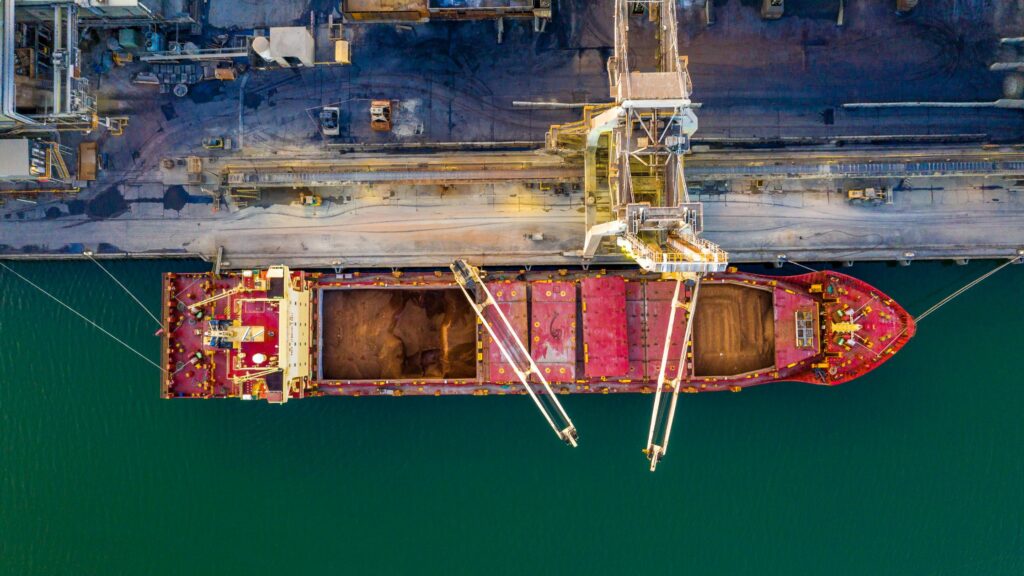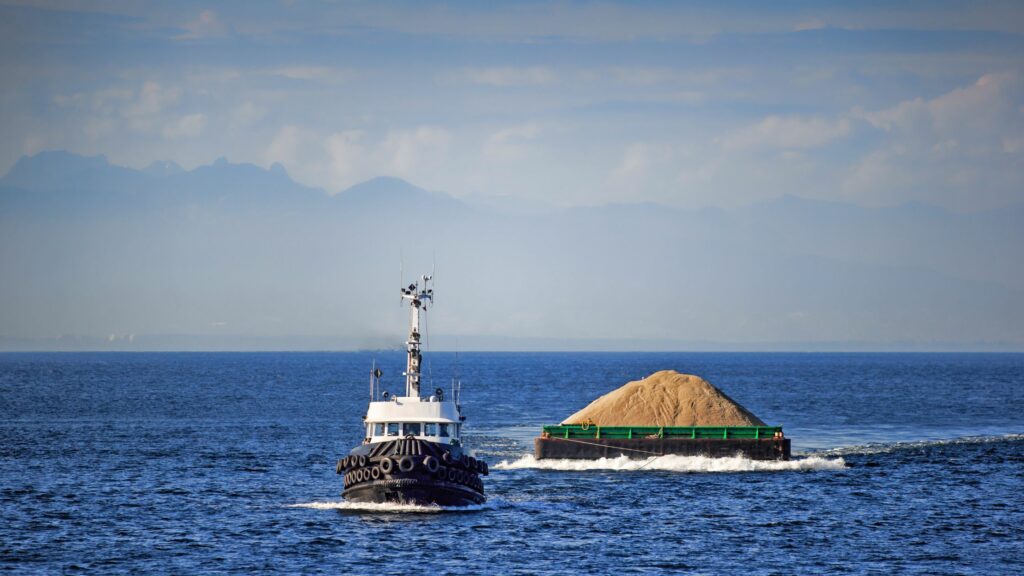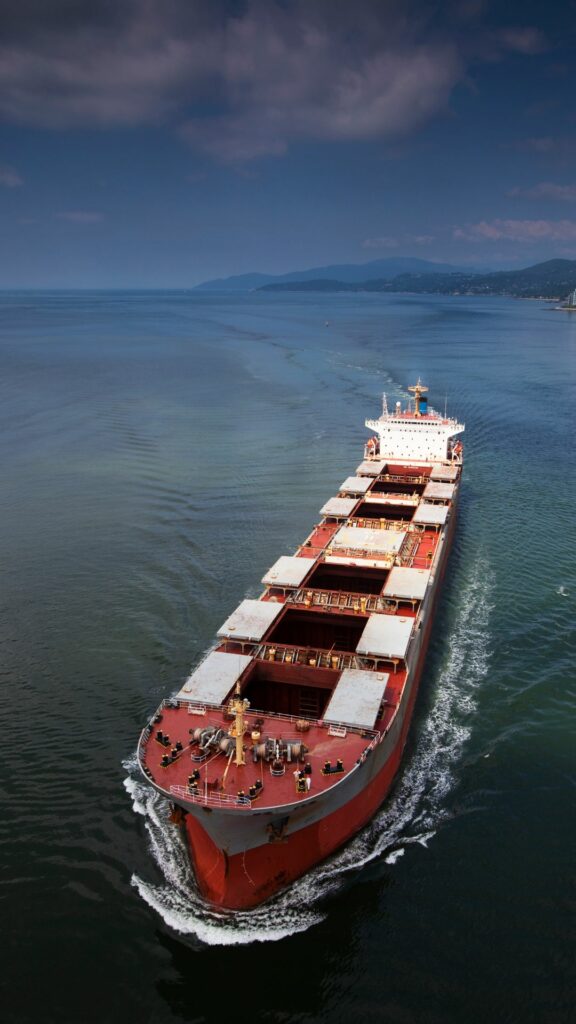Physical Address
304 North Cardinal St.
Dorchester Center, MA 02124

Bulk carriers, often overshadowed by container ships and oil tankers, play a crucial role in maritime transport. They carry large quantities of unpackaged commodities like grains, coal, and minerals. Their straightforward design underscores their importance in the global supply chain, providing essential services that keep the economy running.
Different types of bulk carriers, from handy size to Capesize, are built for specific routes and cargo. Each class has unique features tailored to its niche, including operational capabilities and cargo handling systems. Panamax and Supramax vessels are notable for their versatility, efficiently serving both major ports and smaller harbors.
Understanding bulk carrier operations involves examining logistics, maritime regulations, and market dynamics. This includes their role in commodity trading, the effects of international maritime laws, and strategies to enhance efficiency while minimizing environmental impact. The following sections will delve into these aspects, highlighting the essential role bulk carriers play in global trade.
Cargo boats, or cargo ships, differ from other types of boats in several key aspects, primarily due to their purpose of transporting goods across the world’s oceans.
Cargo boats are significantly larger and have a much greater cargo capacity than other types of boats. This size enables them to carry large quantities of goods, ranging from bulk commodities like grain and coal to manufactured goods and containers. For instance, bulk carriers can handle between 20,000 and 200,000 deadweight tonnage (DWT), and container ships can carry thousands of twenty-foot equivalent units (TEUs), with the largest ones managing over 20,000 TEUs.
Cargo boats are specifically designed to transport goods. They feature large cargo holds, reinforced decks, and specialized equipment such as heavy cranes and conveyor belts for efficient loading and unloading. These ships often have specialized holds for different types of cargo, including refrigerated sections for perishable goods and tanks for liquids like oil and chemicals. Their hull shapes are optimized to maximize cargo space and ensure stability at sea.
Unlike leisure or fishing boats that may prioritize speed, comfort, or agility, cargo boats focus on functionality and robustness. Their design is centered around the safe and efficient transport of goods, making them integral to the global trade system. This focus on cargo handling capacity and durability makes cargo boats the backbone of international commerce, enabling the transport of vast quantities of goods across long distances.
The global shipping industry relies on a variety of cargo boats, each designed for specific types of cargo and shipping needs.
Together, these vessels form the lifelines of international commerce, each playing a distinct role in the intricate dance of global supply chains.
| Vessel Type | Typical Cargo | Capacity/Size | Common Uses |
|---|---|---|---|
| Bulk Carriers | Grains, coal, minerals | 20,000 – 200,000 DWT | Transporting unpackaged bulk cargo |
| Container Ships | Packaged goods | 1,000 – 24,000 TEU | Standardized container transport |
| Tankers | Oil, chemicals, LNG | 5,000 – 550,000 DWT | Liquid cargo transport |
| General Cargo Ships | Mixed cargoes | 1,000 – 40,000 DWT | Versatile cargo transport |
| Barges and Tow-on Barges | Bulk, heavy items | Varies widely | Inland and coastal bulk transport |
DWT (Deadweight tonnage) measures a ship’s total carrying capacity including cargo, fuel, crew, etc., while TEU (Twenty-foot Equivalent Unit) is a standard measure for container ship capacity.
Bulk carriers stand out for their capacity to transport vast quantities of dry commodities such as grains, coal, and minerals. These vessels feature expansive, open holds that streamline the loading and unloading process through large deck hatches. Designed to optimize space and operational efficiency, bulk carriers are indispensable in the global trade of bulk materials, facilitating the movement of essential commodities that fuel industries worldwide.
Container ships have revolutionized the shipping industry, enabling the standardized transport of goods in shipping containers. This innovation allows for the seamless interchange of containers between ships, trucks, and trains, significantly enhancing global trade efficiency. Capable of carrying thousands of containers, these ships are crucial for distributing a diverse array of goods—from consumer electronics to clothing—across international borders.
Tankers are specialized vessels designed for the safe transport of liquid and gas cargoes, including crude oil, refined petroleum, chemicals, and liquefied natural gas (LNG). Equipped with specialized tanks and advanced safety systems to prevent spills and leaks, tankers address the unique challenges of transporting fluids and gases. They are vital components of the global energy supply chain, moving large volumes of essential fuels and chemicals.
General cargo ships offer unparalleled versatility in the maritime industry, capable of transporting a mixed assortment of cargo types. Unlike their specialized counterparts, these vessels can accommodate packages, pallets, bags, and barrels, catering to a wide range of shipping needs. Their adaptability makes them especially valuable for smaller ports and varied cargo loads, serving as a crucial link for numerous sectors within the global supply chain.

Barges and tow-on barges present a cost-effective and efficient solution for transporting goods across short sea distances and along inland waterways. Ideal for the movement of heavy or bulky items that are not time-sensitive, such as construction materials and agricultural produce, these flat-bottomed vessels excel in accessibility. Often towed or pushed by tugboats, barges extend the reach of maritime logistics, ensuring goods can be delivered to areas less accessible to larger cargo ships.
Cargo boats navigate the world’s oceans by following international shipping lanes and using navigation systems. These methods ensure safe and efficient travel across vast maritime distances.
Shipping lanes are like highways at sea, guiding vessels along predefined routes. These lanes help avoid navigational hazards, minimize collision risks, and manage maritime traffic in congested areas. Major routes like the Panama Canal and the Suez Canal are essential for global trade but require careful navigation due to their narrow passages and high traffic volumes.
These sophisticated technologies, including GPS, AIS (Automatic Identification Systems), and radar, empower vessels with precise voyage planning capabilities and the ability to make real-time navigational adjustments.
| Navigation System | Function | Example Uses |
|---|---|---|
| GPS | Global positioning | Determining the ship’s exact location at sea |
| AIS | Ship identification and tracking | Avoiding collisions by identifying nearby vessels |
| Radar | Obstacle detection | Detecting other ships and navigational hazards in poor visibility |
| ECDIS | Digital charting and navigation information | Integrating GPS data with electronic navigational charts for route planning |
These systems analyze factors such as weather conditions, sea currents, and maritime traffic, allowing ship captains to optimize routes for speed and fuel efficiency. Combining traditional shipping lanes with cutting-edge technology, cargo boats achieve reliable and efficient global logistics.
Cargo boats are fundamental to global trade, They are as the primary method of transportation of transportation of bulk goods across international waters. They form the backbone of international commerce, enabling the efficient and economical movement of essential commodities and finished products vital to the world’s economies. Cargo boats ensure a continuous flow of trade by transporting raw materials needed for manufacturing and delivering consumer goods to markets worldwide.
Cargo boats are the linchpin in global transportation, offering unmatched capability to move vast quantities of essential commodities. They transport billions of tons of cargo annually, including over 90% of the world’s traded goods. For example, in a single year, the global shipping industry can transport more than 10 billion tons of cargo, covering a wide range of commodities such as grains, minerals, electronics, and automobiles. This volume underscores the indispensable role of cargo boats in maintaining the flow of goods essential for global markets and manufacturing.
Cargo boats are critical to the economy and the integrity of supply chains. For example, the global supply chain for automobiles relies on a complex network of suppliers delivering parts from around the world, often via cargo boats. A car manufactured in Europe might contain a transmission made in Japan, a battery sourced from South Korea, and steel from Brazil. Cargo boats facilitate the timely and efficient transport of these components, enabling manufacturers to maintain production schedules and meet market demand. This interconnectedness highlights how cargo boats are essential not only for transporting goods but also for supporting the global economy and the seamless operation of international supply chains.
Cargo boats bear a significant environmental footprint and are major contributors to CO2 emissions. The international shipping industry is responsible for a notable percentage of the world’s greenhouse gas emissions. This issue is exacerbated by the prevalent use of bunker fuel, which emits high levels of sulfur dioxide and nitrogen oxides upon combustion, leading to air pollution and contributing to both acid rain and respiratory issues in human populations.
Furthermore, cargo boats represent a potential source of marine pollution, through incidents such as accidental oil spills, operational discharges, and the release of ballast water that carries invasive species into new marine environments. These environmental challenges highlight the urgent need for the maritime industry to adopt sustainable practices and innovative technologies to reduce its ecological impact and protect the planet’s health.
Cargo boats are identified as significant contributors to CO2 emissions, with the maritime shipping industry accounting for a substantial portion of global greenhouse gas outputs. This is largely due to the widespread use of heavy fuel oil, a high-carbon fuel, which, when combusted, releases considerable amounts of carbon dioxide into the atmosphere. Given the extensive nature of global shipping operations, the cumulative effect of these emissions is a major concern for climate change.
This underscores the critical need for the industry to shift towards greener fuels and more energy-efficient technologies to lessen its impact on global warming.
In addition to their role in air pollution, cargo boats also represent a potential source of marine pollution. This includes the risk of oil spills during accidents, operational discharges of pollutants, and the spread of invasive species via ballast water. Such activities can severely damage marine ecosystems, affecting biodiversity and the well-being of communities dependent on marine resources.
Combatting this threat requires the implementation of strict regulations and the adoption of environmentally responsible practices in shipping operations to protect marine environments for future generations.
| Environmental Impact | Description | Statistics/Examples |
|---|---|---|
| CO2 Emissions | Major contributors to global greenhouse gas emissions due to the use of heavy fuel oil. | The shipping industry accounts for about 2.89% of global CO2 emissions. |
| Air Pollution | Emission of sulfur dioxide and nitrogen oxides contributing to acid rain and respiratory problems. | Shipping is a significant source of sulfur oxides, contributing to 9% of global SOx emissions. |
| Marine Pollution | Risk of oil spills, operational discharges, and invasive species through ballast water. | Major oil spills have released millions of gallons of oil, severely impacting marine life and coastlines. |
| Ballast Water | Discharge of ballast water carries invasive species that can disrupt local ecosystems. | The introduction of invasive species through ballast water is considered one of the four greatest threats to the world’s oceans. |
The safety of cargo boats is paramount, secured through strict adherence to international maritime regulations. These regulations, governed by bodies such as the International Maritime Organization (IMO), establish rigorous standards for vessel construction, maintenance, and operational practices, ensuring that ships are equipped to navigate the challenges of the sea safely. Beyond regulatory compliance, the safety of these vessels is further reinforced by regular safety drills and meticulous equipment checks.
These practices are essential for preparing the crew for emergency situations and confirming the readiness of all safety mechanisms onboard. Together, these measures form a comprehensive approach to minimizing risks on the water, protecting both the crew and the cargo they transport.
At the core of ensuring the safety of cargo boats is the adherence to international maritime regulations. These comprehensive standards, set forth by entities such as the International Maritime Organization (IMO), dictate the essential criteria for ship design, construction, and operational procedures. Compliance with these regulations is not merely a legal obligation but a fundamental practice to guarantee that vessels are sea-ready and capable of facing the myriad challenges of ocean navigation.
Through strict adherence, shipping companies affirm their dedication to safety, significantly mitigating the risks of maritime accidents and environmental damage.
In parallel with regulatory compliance, the commitment to safety is further reinforced by regular safety drills and meticulous equipment checks. These drills are vital, training the crew to efficiently handle various emergency situations, such as onboard fires, potential collisions, and procedures for abandoning ship. Equally important are the equipment checks, which involve rigorous inspections of all safety equipment, including life-saving appliances, firefighting gear, and navigational aids, to ensure they are in prime condition.
This proactive stance on safety highlights the maritime industry’s resolve to safeguard not only the lives of those at sea but also the precious cargo they carry and the pristine marine environment they traverse.
| Safety Aspect | Description | Key Conventions/Practices |
|---|---|---|
| International Maritime Regulations | Standards for ship design, construction, and operation. | SOLAS (Safety of Life at Sea), MARPOL (Prevention of Pollution from Ships), STCW (Standards of Training, Certification, and Watchkeeping for Seafarers) |
| Safety Drills | Regular training for emergency situations. | Fire drills, man-overboard drills, abandonment drills, conducted monthly or as per voyage requirements. |
| Equipment Checks | Inspections of safety and navigation equipment. | Life-saving appliances, firefighting equipment, navigational aids, checked before each voyage and during regular maintenance schedules. |
| Environmental Compliance | Adherence to regulations preventing pollution. | MARPOL annexes, ballast water management, emissions control areas (ECAs) for sulfur emissions. |

The horizon for cargo boat technology is set against a backdrop of innovation aimed at sustainability and increased automation. A key trend is the development of autonomous navigation systems, which stand to revolutionize the industry by enhancing navigational accuracy and safety through the minimization of human error. Utilizing a suite of advanced sensors, artificial intelligence (AI), and machine learning, these systems promise a new era of precision and reliability in maritime travel.
Equally compelling is the move towards eco-friendly propulsion methods, including the adoption of electric batteries, hydrogen fuel cells, and wind-assisted propulsion technologies. These advancements are driven by the urgent need to reduce the environmental impact of shipping, cutting down on greenhouse gas emissions and the sector’s dependence on fossil fuels. Together, these trends paint a future where cargo shipping not only becomes more efficient and safer but also significantly more sustainable, aligning with global efforts to combat climate change and protect our oceans.
The development of autonomous navigation systems marks a pivotal advancement in cargo boat technology, harnessing the power of artificial intelligence (AI), machine learning, and sophisticated sensor technologies. These systems are designed to significantly enhance the accuracy and safety of maritime navigation, automating the process to minimize human error, a major factor in maritime incidents. The advent of autonomous navigation not only boosts operational efficiency but also heralds a future where cargo vessels navigate the oceans with unprecedented precision and reliability, setting a new standard in maritime transport.
Facing the urgent need for environmental conservation, the shipping industry is actively pursuing the implementation of eco-friendly propulsion methods. This initiative encompasses the adoption of electric batteries, hydrogen fuel cells, and wind-assisted propulsion technologies, each offering a sustainable alternative to traditional fossil fuel-based systems. These innovative propulsion methods aim to drastically reduce the shipping industry’s environmental footprint by cutting emissions and diminishing the reliance on non-renewable energy sources.
As these technologies continue to evolve, they promise to transform cargo shipping into a paragon of environmental sustainability, contributing significantly to the global effort to mitigate climate change.